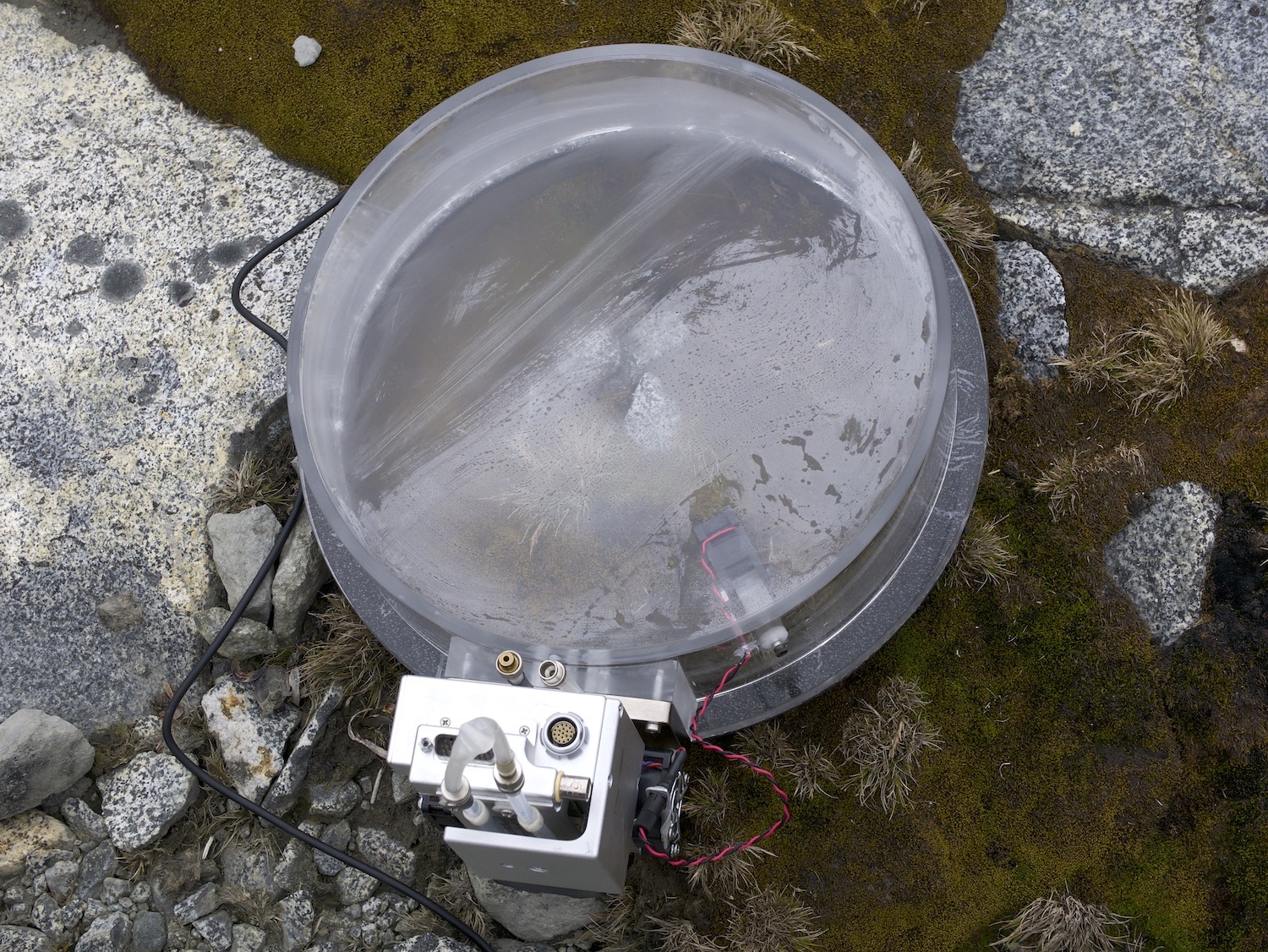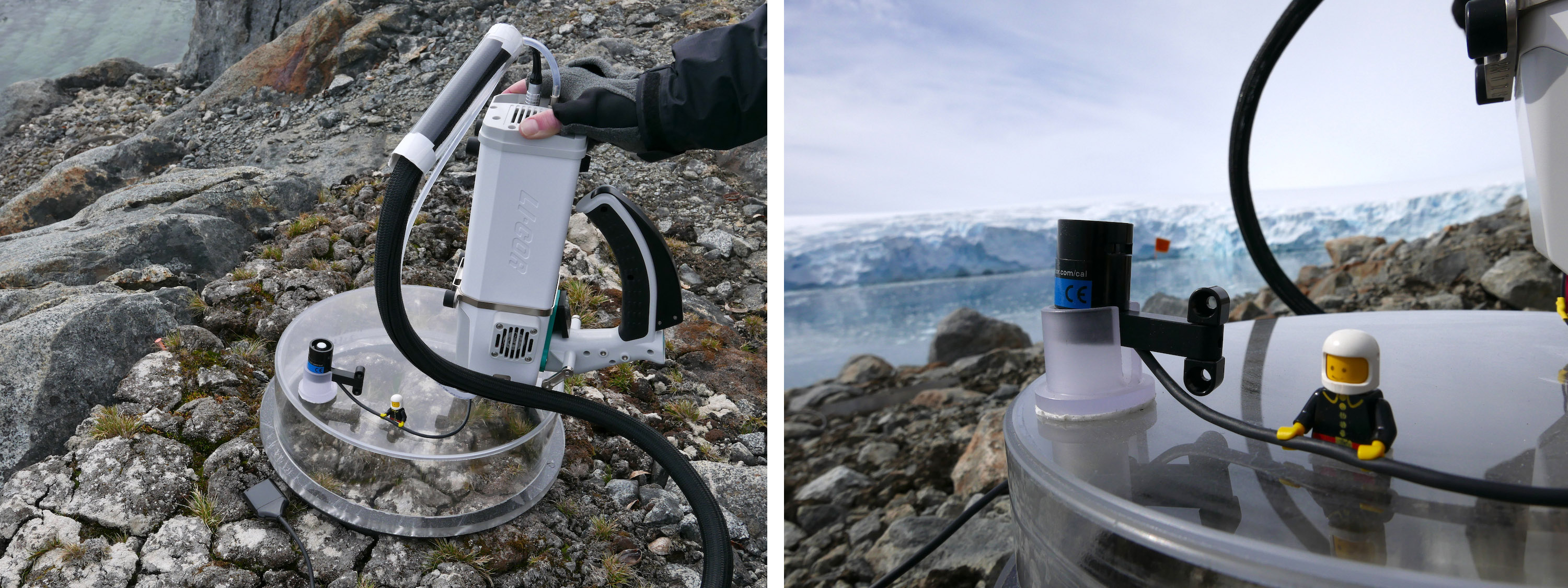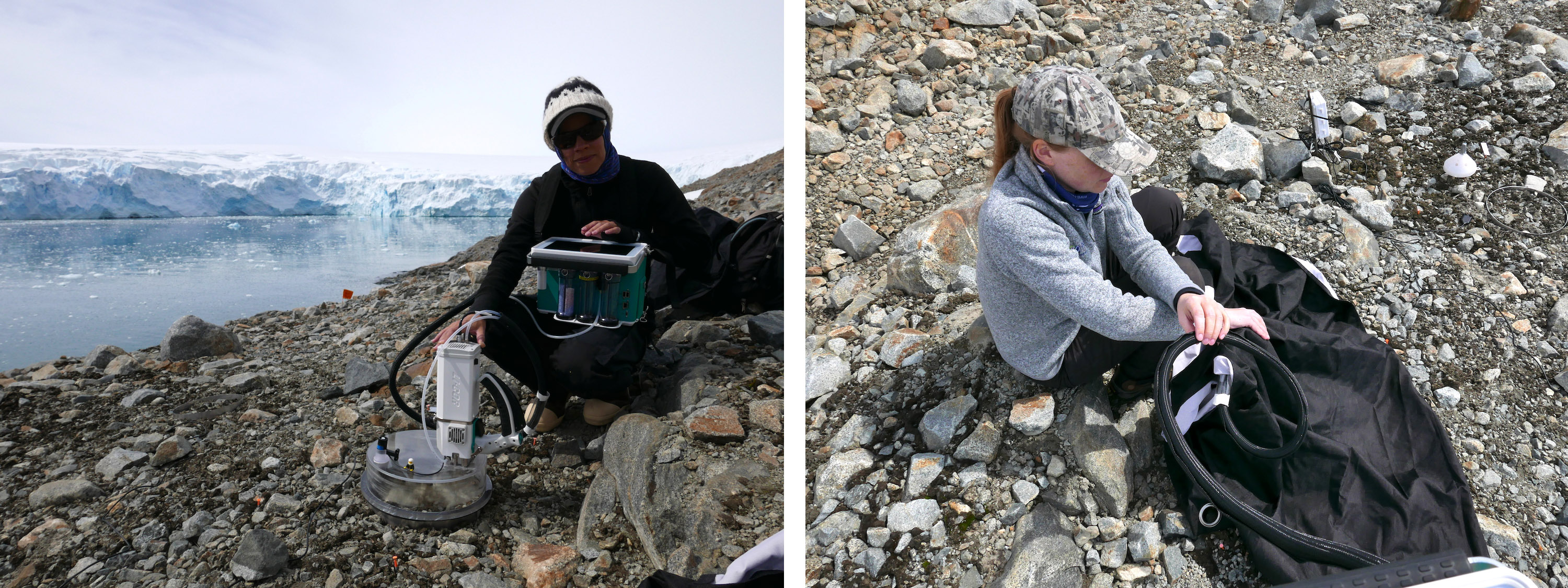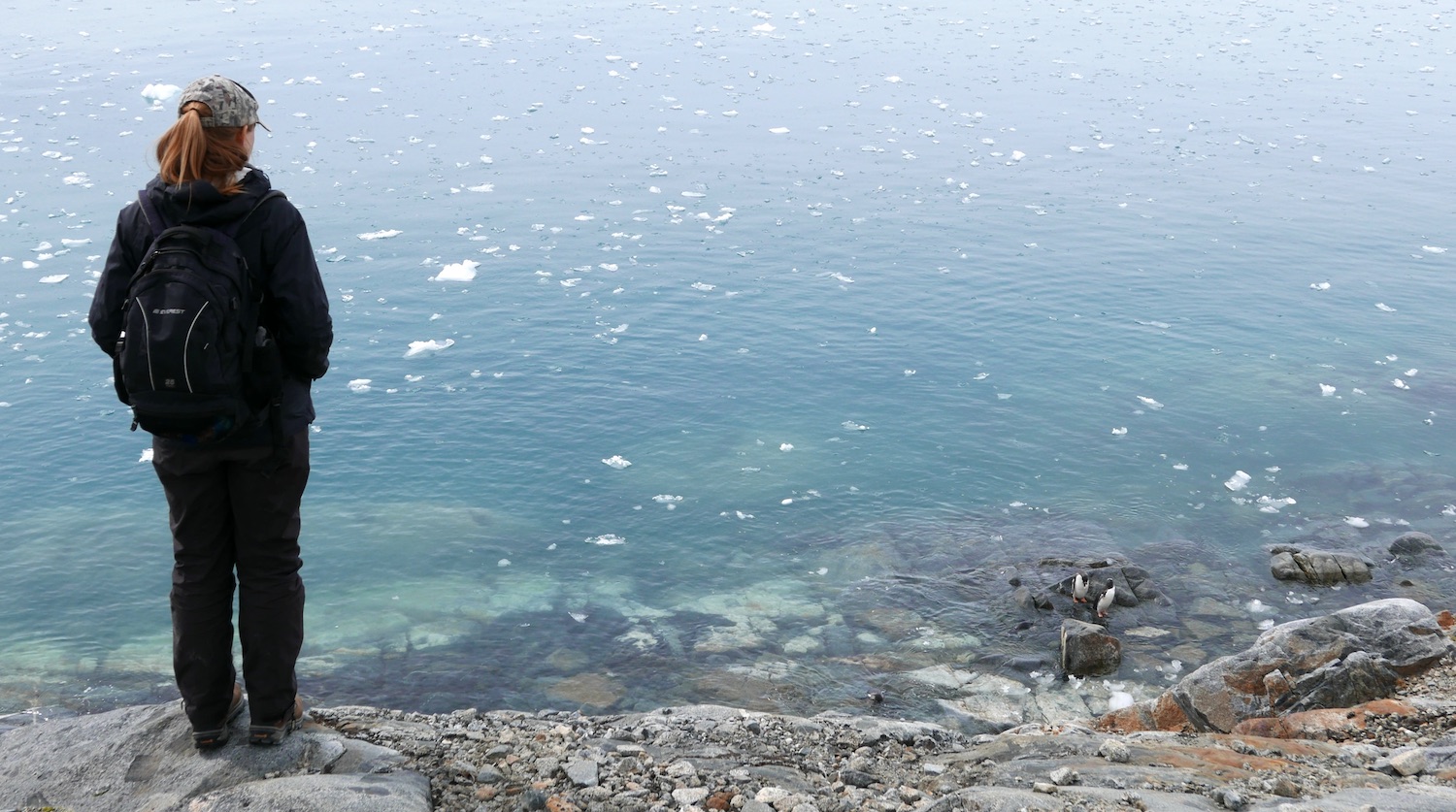Day two of pre-treatment measurements:
We had some issues of condensation inside our small custom chamber. Condensation prevents some light from reaching the plants inside the chamber and so the plants do not photosynthesize as much. I learned today that Antarctica’s plants are extremely sensitive and respond nearly immediately to changes in light conditions. The condensation thus poses a problem. What do do? An experiment.
Megan and Darren Roberts, who do bird research here, suggested toothpaste because divers sometimes use that to prevent condensation inside their goggles. I had used soap when I snorkeled - but toothpaste?
Why not test it? We put toothpaste inside half of the chamber and left the other half untreated. We left the chamber on the soil collar that we had had condensation problems with.
And it worked! The half treated with the toothpaste remained far clearer than the untreated half.

We were set to continue and finalize our carbon flux measurements today. Perhaps our mascotte will provide us with luck. We received our mascotte from Phil Cruzan (from Texas Tech university), who had built the chamber for me based on my design. The mascotte’s name: Cable Guy; he holds the PAR sensor. The PAR sensor measures the light available to plants; PAR stands for photosynthetically active radiation, so light between 400-700 nm.

Note that the chamber, now entirely treated with toothpaste, is clear?
When we take carbon flux measurements, we first take measurements with the clear chamber so that photosynthesis can happen. The second measurement in that same plot will be in the dark - we use a thick black shower curtain to block out the light completely. Total darkness means that only respiration can happen (as photosynthetic processes need light). So, now we have two important fluxes:
- the net flux (with photosynthesis and respiration happening at the same time)
- the flux caused by respiration
This means we can now calculate the gross photosynthesis by the community from the two fluxes that we measured.

How will warming affect gross photosynthesis, respiration, and net carbon flux? That is the question! (OK, not quite Shakespearean).
During a brief lunch break between the measurements we sat near the water to observe the crabeater seals in the water, gentoo penguins, and the glacier calving (with thunderous sounds!).
I love this place.
